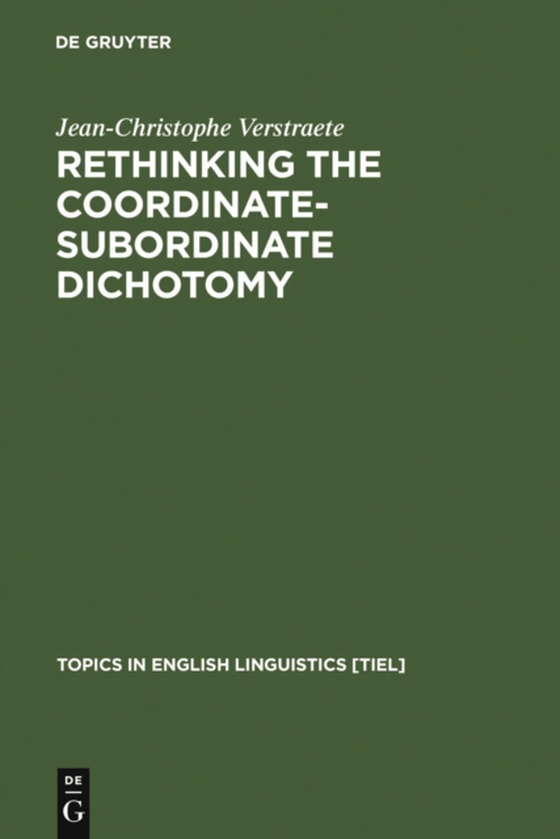
Rethinking the Coordinate-Subordinate Dichotomy e-bog
1094,57 DKK
(inkl. moms 1368,21 DKK)
This study argues that the domain traditionally covered by 'coordination' and 'subordination' in English can be subdivided into four distinct construction types. The constructions are defined on the basis of differences in their 'interpersonal' structure, i.e. the grammatical encoding of speaker-attitude and speaker-interlocutor interaction. It is shown that the four types constitute syntact...
E-bog
1094,57 DKK
Forlag
De Gruyter Mouton
Udgivet
22 december 2011
Længde
336 sider
Genrer
Grammar, syntax and morphology
Sprog
English
Format
pdf
Beskyttelse
LCP
ISBN
9783110918199
This study argues that the domain traditionally covered by 'coordination' and 'subordination' in English can be subdivided into four distinct construction types. The constructions are defined on the basis of differences in their 'interpersonal' structure, i.e. the grammatical encoding of speaker-attitude and speaker-interlocutor interaction. It is shown that the four types constitute syntactically, semantically and pragmatically coherent categories, with differences in interpersonal structure defining and motivating distinct syntactic behaviour, distinct pragmatic functions and distinct semantic classes of clause linkage. The validity of the analysis is demonstrated in three ways. First, it is shown that the analysis can make sense of the wide range of apparently conflicting criteria found in the literature on complex sentences, which can now be explained as reflections of four different construction types rather than as alternative perspectives on one single contrast between coordination and subordination. Second, it is shown how the analysis can deal with two specific problems in the more general area of clause combining, viz. the syntactic basis of the distinction between 'content', 'epistemic' and 'speech act' levels of clause linkage, and the distinct discursive functions associated with initial and final position of adverbial clauses. Finally, it is also shown that the proposed analysis is useful beyond the analysis of English, with parallels in a number of cross-linguistically recurrent phenomena of clause linkage. The book is mainly of interest to linguistics researchers in the areas of syntax, semantics and pragmatics as well as to graduate students with a focus on these fields.
 Dansk
Dansk

